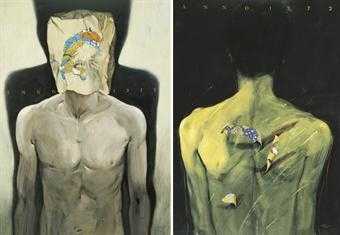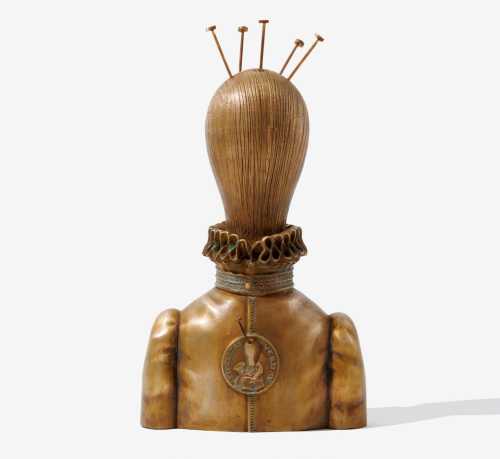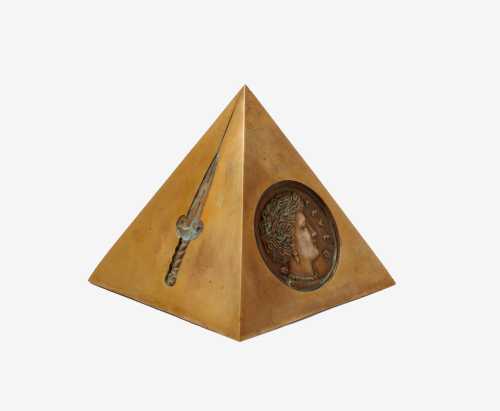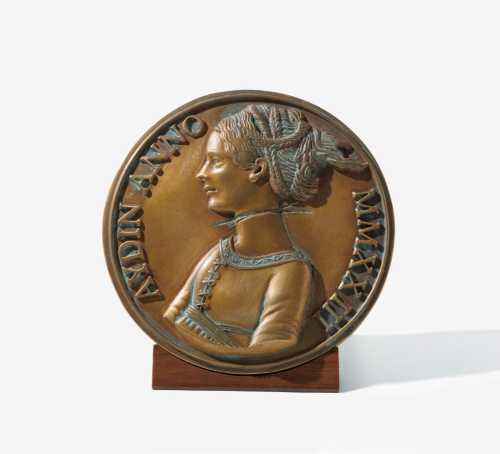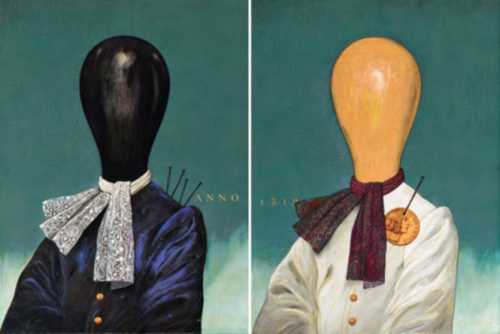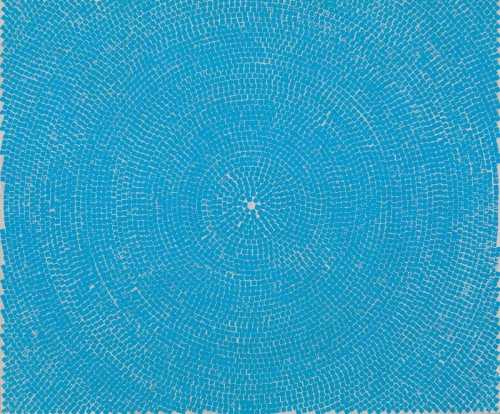- 1) Falling Angels ; 2) ANNO 1373 1993
- a pair: gouache on cardboard
- Painting
- 140 * 100 cm
- each panel signed and dated in Farsi (lower right)
Artwork Description
In his most famous series of Memories of Destruction, Aydin Aghdashloo uses icons of Italian as well as Persian classical paintings, while trying to destroy much of the images through tearing, crumpling, burning and occasionally, scratching. In the later works of this series, he further intensifies his sarcastic language by populating his images with silhouetted faceless body which lack any sense of identity and orientation. These works have an even stronger element of polemic, which points to an increasing skepticism about the rhetoric of the dominant cultural power against the past periods, and thus maintain an explicit political edge.
Much of Aghdashloo's works embody his profound fascination with the glamorous tradition of Persian art crystallized in miniature paintings. In this sense, he always appears as an admirer, rather than a follower, of the old masters, though in his fine details and subtle brushes he has proved to deserve the credit of a real master. Hence, Botticelli and other European old masters of his Memories of Destruction series are here replaced by Reza Abbasi, the prominent court painter of early Safavid dynasty back in early sixteenth century, as well as other Persian artists of the same calibre. Half-burnt or crumpled miniatures, copied from the original works by the masters and suspended in the air, are now ironically set against a smoky backdrop which is basically abstract, but resembles the realm of dream and the province of surrealism. Embellished with fine illuminations and calligraphy, the stunning works of this series are explicit in their political connotations and social readings. The artist's preoccupation with the lost glory of the past is not merely intended to pay homage to his predcesors, but to express a sense of devastation derived from the cultural decline and dissolution of values.
Much of Aghdashloo's works embody his profound fascination with the glamorous tradition of Persian art crystallized in miniature paintings. In this sense, he always appears as an admirer, rather than a follower, of the old masters, though in his fine details and subtle brushes he has proved to deserve the credit of a real master. Hence, Botticelli and other European old masters of his Memories of Destruction series are here replaced by Reza Abbasi, the prominent court painter of early Safavid dynasty back in early sixteenth century, as well as other Persian artists of the same calibre. Half-burnt or crumpled miniatures, copied from the original works by the masters and suspended in the air, are now ironically set against a smoky backdrop which is basically abstract, but resembles the realm of dream and the province of surrealism. Embellished with fine illuminations and calligraphy, the stunning works of this series are explicit in their political connotations and social readings. The artist's preoccupation with the lost glory of the past is not merely intended to pay homage to his predcesors, but to express a sense of devastation derived from the cultural decline and dissolution of values.
Realized Price
106,669 USD
Min Estimate
60,211 USD
Max Estimate
78,296 USD
Average Artwork Worth
+68.62%
Average Growth of Artwork Worth
Sales Performance Against Estimates
Average & Median Sold Lot Value
2021 - 2025
Performance vs. Estimate
2021 - 2025
Sell-through Rate
2021 - 2025
Similar Artworks
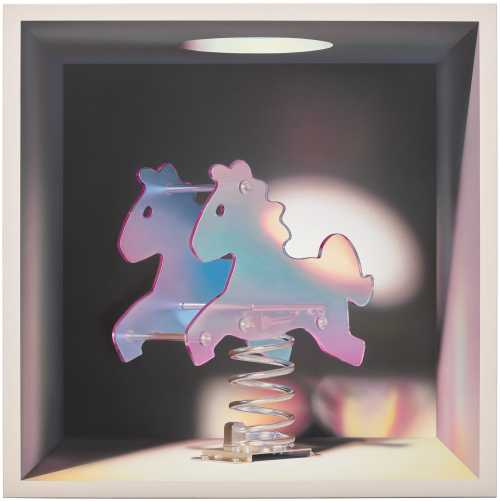
Untitled
Estimation
£50,000
67,568 USD
-
£70,000
94,595 USD
Realized Price
£96,750
130,743 USD
61.25%
Sale Date
Phillips Auction
-
3 December 2025
